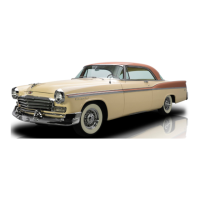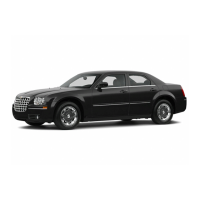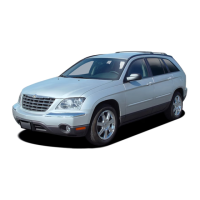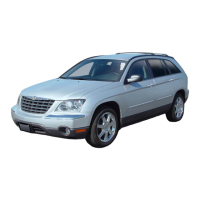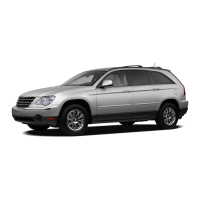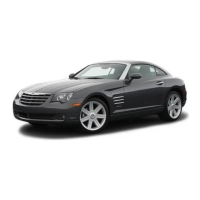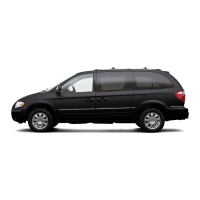16—ENGINE
CHRYSLER SERVICE MANUAL
properly positioned, width of intake seats
should be y
16
to %
2
inch. The width of exhaust
seats should be %
4
to y
16
. When valves and
seats are reground, the position of valve in
head is changed, shortening operating length
of hydraulic tappet. This means that plunger is
operating closer to its bottomed position, and
less clearance is available for thermal expan-
sion of valve mechanism during high speed
driving. Design of plunger travel includes a
safety factor for normal wear and refacing of
valves and seats. The dimension from valve
spring seat in head to valve tip should be
checked with gauge Tool C-3436 for SpitFire
Engines and gauge Tool C-3061 for FirePower
Engines, (Figs. 17 and 18).
The end of cylindrical gauge and bottom of
slotted area represent maximum and minimum
allowable extension of valve stem tip beyond
spring seat. If tip exceeds maximum, grind to
approach, but do not go below minimum allow-
able on gauge.
13.
TESTING VALVE SPRINGS
Whenever valve springs are removed they
should be tested with spring tester, Tool C-647.
Attach torque wrench, check tension and mul-
tiply reading by 2. The valve springs should
test 170 to 184 pounds when compressed to 1%
6
inch. Discard springs that do not meet these
specifications.
Check each spring for squareness with a steel
square and surface plate. (Fig. 19). If spring
is more than y
1Q
inch out of square, install new
spring.
SEAL
RETAINERS
LOCKS
w
54x336A
Fig.
20—Valves, Springs, Seals, Retainers and
Locks (Disassembled View)
14.
INSTALLING VALVES AND VALVE
SPRINGS
Coat valve stems with lubricating oil and in-
sert in position in cylinder head. Install cup
seals on intake valve stems and over valve
guides (Figs. 20 and 21), and install valve
springs and retainers. Compress valve springs
with Tool C-3422. Install locks and release tool.
RETAINER
VALVE SPRING
INTAKE VALVE
CUP SEAL
Fig.
19-Checking Valve Spring for Squareness
Fig.
21-lnstalling Intake Valves and Cup Seals
MyMopar.com

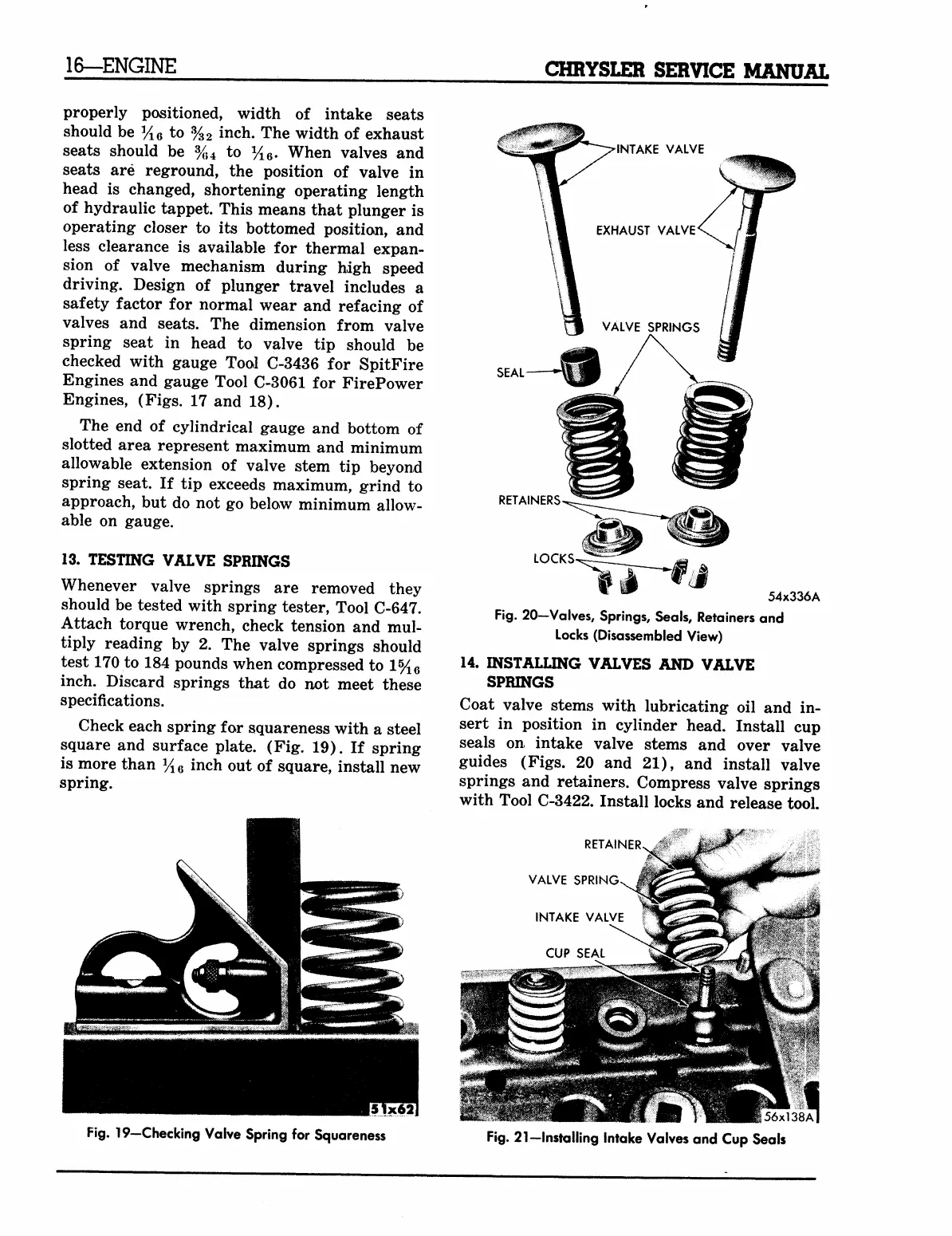